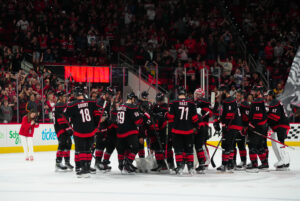Player development seems to always result in more questions than answers. How likely is it for a top pick to pan out? What makes a player a “steal”? Last Word On Hockey will be starting a new series on how to properly develop prospects from all different spots throughout the draft. This week’s piece involves top-10 picks and how they were used early in their careers. Today we take a look at Zach Hamill.
Player Developments of Top-10 Picks: Zach Hamill
In the span of 2005 through 2015, there were 40 total selections made between fourth overall and tenth overall on forwards playing in North America. Of those 40 selections, one player was given patience in their player development, due to their struggles. They took until their DY+5 season before making the NHL. That player was Zach Hamill.
Player Development of Zach Hamill
Zach Hamill was drafted by the Boston Bruins in the 2007 NHL draft at eighth overall. He played both center and right-wing for the Everett Silvertips of the WHL. In his DY-1 season, his second year in the WHL, Hamill recorded 21 goals and 38 assists for 59 points in 53 games. That was good for 1.113 points per game, ranking 12th among the 40 forwards selected. He followed that up with 32 goals and 61 assists for 93 points in 69 games, good for 1.348 points per game. That ranked 17th. Despite what was solid production from Hamill, the Bruins elected not to bring him in directly following the draft.
Staying in the WHL, Hamill would record 26 goals and 49 assists for 75 points in 67 games, with an additional seven AHL games, where he recorded five assists. His production at the WHL level was up at 1.119 points per game, ranking 27th out of 30 players not yet playing at the NHL level in DY+1 production. The following season, Hamill would play full-time in the AHL, recording 13 goals and assists for 26 points in 65 games, good for 0.4 points per game. That ranked last out of 12 players still outside the NHL in their DY+2 seasons.
Even More AHL Time for Hamill
Staying in the AHL again for his DY+3 season, Hamill would score 14 goals and 30 assists for 44 points in 75 games, recording 0.587 points per game, ranking first among five players still outside the NHL in DY+3 production.
In his DY+4 season, Hamill would see 68 AHL games, scoring nine goals and 34 assists for 43 points, good for 0.632 points per game, ranking first out of the three players outside the NHL in DY+4 production. Following this season, he would finally get some extended time at the NHL level.
How Was Hamill Used?
In his first NHL season, Hamill would play just 16 NHL games, grabbing two assists. He would get an additional 41 AHL games that season as well, scoring eight goals and 13 assists for 21 points. In his short NHL stint, Hamill averaged 10:59 time on ice per game. His advanced analytics were decent, finishing above replacement level in all four categories looked at. His even-strength offence goals above replacement (EVO) was 0.3 and his even-strength defence above replacement level (EVD) sat at 0.4. Meanwhile, his goals above replacement (GAR) was up at 1.3 and his wins above replacement (WAR) was a decent 0.2.
Despite solid underlying stats in a very small sample size, Hamill would not see NHL ice in his second professional season. Instead, he would play 72 AHL games across three different AHL teams. He recorded 19 goals and 25 assists for 44 points. His third professional season was more of the same, seeing 21 AHL games, scoring three goals and six assists for nine points, before leaving North America for the KHL. There he scored one goal and two assists for three points.
Hamill’s NHL Journey Never Arrives Due to Poor Player Development
After the Bruins took Hamill eighth overall in the 2007 draft, they never took any time for Hamill’s player development. He got a total of 20 NHL games in his career. Four games came at various times before his 16-game stint. He would stay in Europe for the remainder of his career. Playing one season in Liiga (Finland), a half-season in NLA (Switzerland) and DEL (Germany), a half-season in Norway and Czechia, then two seasons in the DEL2 (Germany’s second-tier), then finally a season in Ligue Magnus (France).
Junior league stats via Elite Prospects, NHL stats via Hockey Reference, NHL analytics via Evolving Hockey.
Main Photo:






